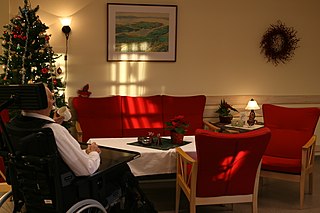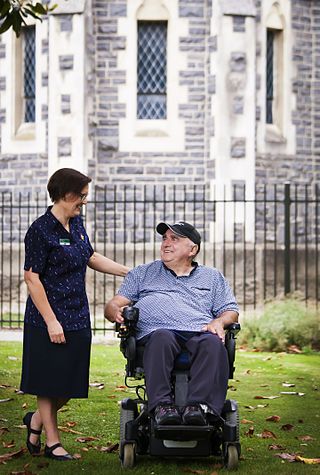Palliative care is an interdisciplinary medical caregiving approach aimed at optimizing quality of life and mitigating suffering among people with serious, complex, and often terminal illnesses. Within the published literature, many definitions of palliative care exist. The World Health Organization (WHO) describes palliative care as "an approach that improves the quality of life of patients and their families facing the problems associated with life-threatening illness, through the prevention and relief of suffering by means of early identification and impeccable assessment and treatment of pain, illnesses including other problems whether physical, psychosocial, and spiritual". In the past, palliative care was a disease specific approach, but today the WHO takes a broader patient-centered approach that suggests that the principles of palliative care should be applied as early as possible to any chronic and ultimately fatal illness. This shift was important because if a disease-oriented approach is followed, the needs and preferences of the patient are not fully met and aspects of care, such as pain, quality of life, and social support, as well as spiritual and emotional needs, fail to be addressed. Rather, a patient-centered model prioritizes relief of suffering and tailors care to increase the quality of life for terminally ill patients.

Elderly care, or simply eldercare, serves the needs of old adults. It encompasses assisted living, adult daycare, long-term care, nursing homes, hospice care, and home care.

Long-term care (LTC) is a variety of services which help meet both the medical and non-medical needs of people with a chronic illness or disability who cannot care for themselves for long periods. Long-term care is focused on individualized and coordinated services that promote independence, maximize patients' quality of life, and meet patients' needs over a period of time.
Residential care refers to long-term care given to adults or children who stay in a residential setting rather than in their own home or family home.
Kinship care is a term used in the United States and Great Britain for the raising of children by grandparents, other extended family members, and unrelated adults with whom they have a close family-like relationship such as godparents and close family friends because biological parents are unable to do so for whatever reason. Legal custody of a child may or may not be involved, and the child may be related by blood, marriage, or adoption. This arrangement is also known as "kincare" or "relative care." Kinship placement may reduce the number of home placements children experience; allow children to maintain connections to communities, schools, and family members; and increase the likelihood of eventual reunification with birth parents. It is less costly to taxpayers than formal foster care and keeps many children out of the foster care system. "Grandfamily" is a recently coined term in the United States that refers to families engaged in kinship care.

An adult daycare center is typically a non-residential facility that supports the health, nutritional, social, and daily living needs of adults in a professionally staffed, group setting. These facilities provide adults with transitional care and short-term rehabilitation following hospital discharge. The majority of centers provide meals, meaningful activities, and general supervision. The care provided is often a social model or a medical model provided in order to improve participants health and guide their progress in the right direction. Demand for adult daycare centers is increasing with the need for assistance in old age or guidance to reintegrate into society after injury, illness or addiction, and accommodation to return to their former lives or improve upon their quality of life.
Respite care is planned or emergency temporary care provided to caregivers of a child or adult.

A caregiver, carer or support worker is a paid or unpaid person who helps an individual with activities of daily living. Caregivers who are members of a care recipient's family or social network, and who may have no specific professional training, are often described as informal caregivers. Caregivers most commonly assist with impairments related to old age, disability, a disease, or a mental disorder.
Carers' rights are rights of unpaid carers or caregivers to public recognition and assistance in preventing and alleviating problems arising from caring for relatives or friends with disabilities. The carers' rights movement draws attention to issues of low income, social exclusion, damage to mental and physical health identified by research into unpaid caregiving. In social policy and campaigning the movement distinguishes such people's situation from that of paid careworkers, who in most developed countries have the benefit of legal employment protection and rights at work. With an increasingly ageing population in all developed societies, the role of carer has been increasingly recognized as an important one, both functionally and economically. Many organizations which provide support for persons with disabilities have developed various forms of support for carers/caregivers as well.
As populations age, caring for people with dementia has become more common. Elderly caregiving may consist of formal care and informal care. Formal care involves the services of community and medical partners, while informal care involves the support of family, friends, and local communities. In most mild-to-medium cases of dementia, the caregiver is a spouse or an adult child. Over a period of time, more professional care in the form of nursing and other supportive care may be required medically, whether at home or in a long-term care facility. There is evidence to show that case management can improve care for individuals with dementia and the experience of their caregivers. Furthermore, case management may reduce overall costs and institutional care in the medium term. Millions of people living in the United States take care of a friend or family member with Alzheimer’s disease or a related dementia.
Family caregivers are "relatives, friends, or neighbors who provide assistance related to an underlying physical or mental disability for at-home care delivery and assist in the activities of daily living (ADLs) who are unpaid and have no formal training to provide those services."
A professional live-in caregiver provides personal care and assistance to individuals, including those suffering from chronic illness, Alzheimer's disease, and dementia, within the home setting. Typical duties of a live-in caregiver include meal planning and preparation, assistance with grooming, dressing and toileting, medication management, laundry and light housekeeping, and transportation/escorts to doctor's appointments or social engagements. Professional live-in caregivers are often provided by an outside agency, which may also coordinate their services with the client's preferred in-home health agency and other medical providers.
Caregiver syndrome or caregiver stress is a condition that strongly manifests exhaustion, anger, rage, or guilt resulting from unrelieved caring for a chronically ill patient. This condition is not listed in the United States' Diagnostic and Statistical Manual of Mental Disorders, although the term is often used by many healthcare professionals in that country. The equivalent used in many other countries, the ICD-11, does include the condition.
The Pennsylvania Department of Aging is a cabinet-level agency charged with providing aid to Pennsylvania's approximately three million individuals age 60 and older. Although the bureau operates some services directly, such as the Pharmaceutical Contact for the Elderly (PACE) prescription drug program, it generally serves as a clearinghouse of funding and information for county-level Area Agencies on Aging. The department was formed under the governorship of Milton Shapp.
An informal or primary caregiver is an individual in a cancer patient's life that provides unpaid assistance and cancer-related care. Caregiving is defined as the processing of assiting someone who can't care for themselves, which includes physical, mental, emotional, social, and spiritual needs. Due to the typically late onset of cancer, caregivers are often the spouses and/or children of patients, but may also be parents, other family members, or close friends. Taking care of family members at home is a complicated experience. The relationships involved constantly shift and change, in expected and unexpected ways. The expected or expected changes can negatively affect physical health, emotions, social life, and spiritual well-being of the caregiver. Informal caregivers are a major form of support for the cancer patient because they provide most care outside of the hospital environment. This support includes:
Chronic disease in Northern Ontario is a population health problem. The population in Northern Ontario experiences worse outcomes on a number of important health indicators, including higher rates of chronic disease compared to the population in the rest of Ontario.
Family support is the support of families with a member with a disability, which may include a child, an adult, or even the parent in the family. In the United States, family support includes "unpaid" or "informal" support by neighbors, families, and friends, "paid services" through specialist agencies providing an array of services termed "family support services", school or parent services for special needs such as respite care, specialized child care or peer companions, or cash subsidies, tax deductions or other financial subsidies. Family support has been extended to different population groups in the US and worldwide. Family support services are currently a "community services and funding" stream in New York and the US which has had variable "application" based on disability groups, administrating agencies, and even, regulatory and legislative intent.
Children with Special Healthcare Needs (CSHCN) are defined by the Maternal and Child Health Bureau as:
Caregiving by country is the regional variation of caregiving practices as distinguished among countries.
Caregiver burden is the stress which is perceived by caregivers due to the home care situation. The subjective burden is considered to be one of the most important predictors of negative outcomes from the home care situation.


